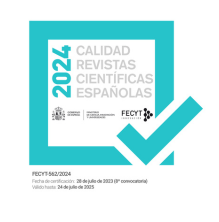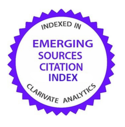Gestión del riesgo por inundaciones en países con distintas características socioeconómicas
DOI:
https://doi.org/10.26360/2020_4Palabras clave:
riesgo de inundación, la agrupación de riesgos, valor en riesgo, distribuciones de cola pesadaResumen
En este artículo se analiza el seguro en caso de inundación en diferentes países con diferentes niveles socio-económicos combinando sus exposiciones al riesgo, en primer lugar, a nivel continental y luego a nivel global. Después de juntar las regiones según su número de inundaciones durante el último siglo, agrupamos los países en función de estimaciones de su valor en riesgo, minimizando el valor total en riesgo de todos los grupos, como en Prettenthaler, Albrecher, Asadi, and Köberl, (2017). Utilizando distribuciones de colas pesadas para modelar las pérdidas (presentadas como porcentajes del PIB y ajustadas a la inflación), buscamos una estrategia óptima de agrupación de riesgos entre países, independientemente de su situación socioeconómica. Los beneficios económicos de dicha distribución de riesgos, tanto a nivel continental como mundial, se cuantifican mediante los correspondientes valores en riesgo con o sin agrupación. Recomendamos esta agrupación de riesgo para todos los países, como un mecanismo para reducir las primas de riesgo y aumentar la eficiencia en la respuesta a desastres.
Descargas
Citas
Anderson, T. W., and Darling, D. A. (1952). Asymptotic Theory of Certain “Goodness of Fit” Criteria Based on Stochastic Processes. The Annals of Mathematical Statistics, 23(2),193–212.
Anderson, T. W., and Darling, D. A. (1954). A test of Goodness of Fit. Journal of the American Statistical Association, 49(268),765–769.
Beirlant, J., Alves, I. F., and Gomes, I. (2016). Tail fitting for truncated and non-truncated paretotype distributions. Extremes, 19(3),429–462.
Blöschl, G., Kiss, A., Viglione, A., Barriendos, M., Böhm, O., Brázdil, R., Coeur, D., Demarée, G., Llasat, M. C., Macdonald, N., et al. (2020). Current European flood-rich period exceptional compared with past 500 years. Nature, 583(7817):560–566.
Bouwer, L. M. (2011). Have disaster losses increased due to anthropogenic climate change? Bulletin of the American Meteorological Society, 92(1),39–46.
Broberg, M., and Hovani-Bue, E. (2019). Disaster risk reduction through risk pooling: the case of hazard risk pooling schemes. The Cambridge Handbook of Disaster Risk Reduction and International Law, 257–274.
Browne, M. J., and Hoyt, R. E. (2000). The demand for flood insurance: empirical evidence. Journal of Risk and Uncertainty, 20(3),291–306.
Chernobai, A., Rachev, S., and Fabozzi, F. (2005). Composite goodness-of-fit tests for left-truncated loss samples. Handbook of Financial Econometrics and Statistics, 575–596.
Crichton, D. (2008). Role of insurance in reducing flood risk. The Geneva Papers on Risk and Insurance - Issues and Practice, 33(1),117–132.
Delignette-Muller, M. L., Dutang, C., et al. (2015). fitdistrplus: An r package for fitting distributions. Journal of Statistical Software, 64(4),1–34.
Doocy, S., Daniels, A., Murray, S., and Kirsch, T. D. (2013). The human impact of floods: a historical review of events 1980-2009 and systematic literature review. Public Library of Science Currents Disasters, 5.
Douglas, I., Alam, K., Maghenda, M., Mcdonnell, Y., McLean, L., and Campbell, J. (2008). Unjust waters: climate change, flooding and the urban poor in Africa. Environment and Urbanization, 20(1),187–205.
Dutang, C., Goulet, V., Pigeon, M., et al. (2008). actuar: An r package for actuarial science. Journal of Statistical software, 25(7),1–37.
Eling, M., Pradhan, S., and Schmit, J. T. (2014). The determinants of microinsurance demand. The Geneva Papers on Risk and Insurance-Issues and Practice, 39(2),224–263.
Field, C. B., Barros, V., Stocker, T. F., and Dahe, Q. (2012). Man- aging the risks of extreme events and disasters to advance climate change adaptation: special report of the intergovernmental panel on climate change. Cambridge University Press.
Hanson, S., Nicholls, R., Ranger, N., Hallegatte, S., Corfee-Morlot, J., Herweijer, C., and Chateau, J. (2011). A Global Ranking of Port Cities With High Exposure to Climate Extremes. Climatic Change, 104(1),89–111.
Hudson, P., Botzen, W. W., and Aerts, J. C. (2019). Flood insurance arrangements in the European Union for future flood risk under climate and socioeconomic change. Global environmental change, 58:101966.
ISDR (2009). Risk and poverty in a changing climate: invest today for a safer tomorrow. United Nations International Strategy for Natural Disaster
Reduction Global Assessment Report on Disaster Risk reduction.
Jongman, B., Ward, P. J., and Aerts, J. C. (2012). Global exposure to river and coastal flooding: long term trends and changes. Global Environmental Change, 22(4), 823–835.
Kron, W. (2005). Flood risk = hazard · values · vulnerability. Water International, 30(1), 58–68.
Kron, W. (2009). Flood insurance: from clients to global financial markets. Journal of Flood Risk Management, 2(1), 68–75.
Kunreuther, H. (1984). Causes of underinsurance against natural disasters. Geneva Papers on Risk and Insurance, 9(31), 206–220.
Kunreuther, H., and Michel-Kerjan, E. O. (2009). Managing catastrophes through insurance: challenges and opportunities for reducing future risks. Risk Management and Decision Processes Center, The Wharton School of the University of Pennsylvania.
Linnerooth-Bayer, J., Mechler, R., and Pflug, G. (2005). Refocusing disaster aid. Science, 309(5737), 1044–1046.
Luceño, A. (2006). Fitting the generalized pareto distribution to data using maximum goodness-of-fit estimators. Computational Statistics & Data Analysis, 51(2), 904–917.
Mahul, O. and Signer, B. (2014). Financial protection against natural disasters: from products to comprehensive strategies. The World Bank -
The Global Facility for Disaster Reduction and Recovery.
Michel-Kerjan, E., and Kunreuther, H. (2011). Redesigning flood insurance. Science, 333(6041), 408–409.
Michel-Kerjan, E. O. (2010). Catastrophe economics: the national flood insurance program. Journal of Economic Perspectives, 24(4), 165–86.
Outreville, J. F. (2013). The relationship between insurance and economic development: 85 empirical papers for a review of the literature. Risk Management and Insurance Review, 16(1), 71–122.
Oxfam, G. (2005). 2005: A year of disasters. Oxfam Policy and Practice: Agriculture, Food and Land, 5(3), 1–7.
Paudel, Y. (2012). A comparative study of public-private catastrophe insurance systems: lessons from current practices. The Geneva Papers on Risk and Insurance - Issues and Practice, 37(2), 257–285.
Pillay, K. (2016). Climate risk management: opportunities and challenges for risk pooling, volume 2 of Small States Digest. Commonwealth Secretariat London.
Prettenthaler, F., Albrecher, H., Asadi, P., and Köberl, J. (2017). On flood risk pooling in Europe. Natural hazards, 88(1), 1–20.
Ranger, N., Hallegatte, S., Bhattacharya, S., Bachu, M., Priya, S., Dhore, K., Rafique, F., Mathur, P., Naville, N., Henriet, F., et al. (2011). An assessment of the potential impact of climate change on flood risk in Mumbai. Climatic Change, 104(1), 139–167.
Ranger, N. and Surminski, S. (2013). A preliminary assessment of the impact of climate change on non-life insurance demand in the BRICS economies. International Journal of Disaster Risk Reduction, 3, 14–30.
Raschky, P. A., Schwarze, R., Schwindt, M., and Zahn, F. (2013). Uncertainty of governmental relief and the crowding out of flood insurance. Environmental and Resource Economics, 54(2), 179–200.
Rufat, S., Tate, E., Burton, C. G., and Maroof, A. S. (2015). Social vulnerability to floods: review of case studies and implications for measurement. International Journal of Disaster Risk Reduction, 14, 470– 486.
Sinclair, C., Spurr, B., and Ahmad, M. (1990). Modified Anderson-Darling test. Communications in Statistics - Theory and Methods, 19(10), 3677–3686.
Surminski, S. (2014). The role of insurance in reducing direct risk: the case of flood insurance. International Review of Environmental and Resource Economics, 7(3-4), 241–278.
Surminski, S., and Oramas-Dorta, D. (2011). Building effective and sustainable risk transfer initiatives in low-and middle-income economies: what can we learn from existing insurance schemes?
Surminski, S., and Oramas-Dorta, D. (2014). Flood insurance schemes and climate adaptation in developing countries. International Journal of Disaster Risk Reduction, 7, 154–164.
Surminski, S., and Thieken, A. H. (2017). Promoting flood risk reduction: the role of insurance in Germany and England. Earth’s Future, 5(10), 979–1001.
Visser, H., Petersen, A. C., and Ligtvoet, W. (2014). On the relation between weather-related disaster impacts, vulnerability and climate change. Climatic Change, 125(3-4), 461–477.
Wallemacq, P. and House, R. (2017). Economic losses, poverty & disasters 1998-2017. Centre for Research on the Epidemiology of Disasters and United Nations Office for Disaster Risk Reduction.
Winsemius, H. C., Aerts, J. C., Van Beek, L. P., Bierkens, M. F., Bouwman, A., Jongman, B., Kwadijk, J. C., Ligtvoet, W., Lucas, P. L., Van Vuuren, D. P., et al. (2016). Global drivers of Future River Flood risk. Nature Climate Change, 6(4), 381–385.
Descargas
Publicado
Cómo citar
Número
Sección
Licencia
Derechos de autor 2022 Weihong Ni, Kira Henshaw, Wei Zhu, Jing Wang, Maoqi Hu, Corina Constantinescu

Esta obra está bajo una licencia internacional Creative Commons Atribución-NoComercial-SinDerivadas 4.0.


















